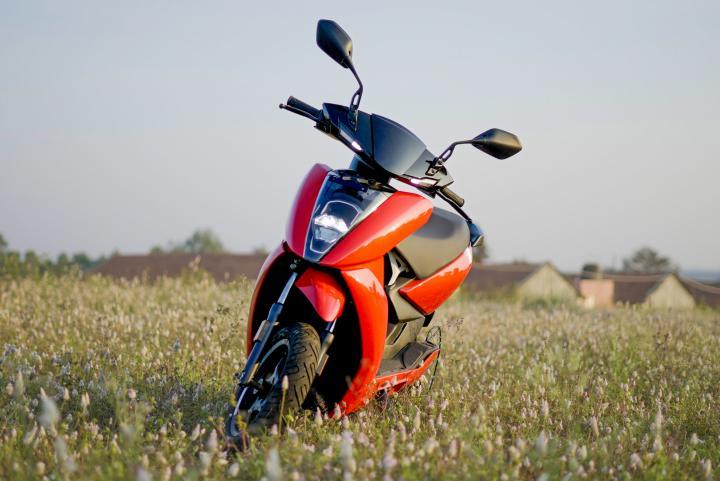News
How to approach your first-ever electric scooter purchase
This is pretty much the only consideration you have to make before purchasing any electric vehicle. How will you juice it up?
BHPian Sensible_Speed recently shared this with other enthusiasts.
Why should I consider an electric scooter in the first place?
- Costs: This is a major factor that influences any purchase decision. There are three costs to note. They are- cost of purchase, cost of maintenance and cost of running.
- With the current pricing trends being what they are, it makes sense now, more than ever, to go electric. A 110cc scooter costs just under a lakh on-road today, with 125cc scooters breaching that mark. 1 lakh rupees for a scooter! We live in weird times. But, when you look at it differently, electric scooters now only cost about 5-10k more than their IC counterparts. So buying them will not put as big a dent in your account as it would have a couple of years back.
- Maintenance costs have been on par or lower than a regular petrol scooter as they are mostly software updates or bug fixes. The killer blow is the steep drop in the running costs when compared to an IC scooter. In 2021, you'd have to cover approximately 60,000-80,000 km on an electric scooter to break even on savings. But now, with the increase in the price of ICE scooters, that number has dropped by half! You break even on savings after roughly 5 years of riding your electric scooter.
- Running costs are a fraction of the rupee as electricity is cheaper than petrol. This is where most EV owners make the bulk of their savings.
- Congestion: The city dwellers amongst us will understand this. How many times have we gotten stuck in traffic, surrounded by big cars and hundreds of scooters, pumping their noxious exhaust vapours into the air? Did you know, the ambient temperature of your surroundings can increase by up to 3 degrees in dense traffic? You can feel the heat of the vehicles around you as you ride through dense traffic. This, compounded by poor city planning, causes exhaustion and a myriad of lifestyle diseases that affect our quality of life.
- While it may be true that EVs pollute just as much as conventional scooters when overall emissions are concerned, it doesn't add heat to their immediate surroundings. Using an EV and encouraging others in cities, can make your commute a bit more pleasant.
- User Experience: Powertrain components are rotary, which means there are no unpleasant vibrations from reciprocating masses. This makes for a smooth and silent start-up and operation. Gone are the unpleasant and noisy grinding of gears, pounding of the engine and buzzing of handlebars and footboard.
Some Pre-requisites to Buying an Electric Scooter
- Charging Infrastructure: This is pretty much the only consideration you have to make before purchasing any electric vehicle. How will you juice it up? This is also the biggest stumbling block in the adoption of electric scooters in cities. Installing a charger in an apartment block can be an arduous task. Ensure the apartment electricals can take the load, and get the approvals needed from your apartment management/ board. And finally, make sure you have ample options to charge up outside your home if you run low on power. While public charging in cities is not an issue, home charging can be. If this requirement is sorted, you are pretty much set to buy an EV.
- Commute Length: Make sure your commute is within the range of your ride. A typical electric scooter can do 60-80 km on a single charge, so if your commute is longer, you need to look for a facility to charge up somewhere in between. One can also adjust their riding style to extract the maximum range from their scooters.
Realistic Options to Choose From
When it comes to buying an electric scooter, you need to ensure you pick the right one. There are plenty of options available at every price point. Staying true to the title, I will only list the options that are a sensible replacement for the typical ICE scooter. Please note, that this section is completely my biased opinion.
To begin with, I am eliminating the Ola Electric offerings outright here. While Ola might offer the most value on paper, their scooters are extremely compromised products and hence, cannot be relied upon. Initially, I figured these problems could be sorted with software updates, but as more and more issues come to light, one can easily figure out that Ola hasn't done their due diligence in developing the product. The Ola S1 series, in my opinion, is an incomplete design and therefore cannot be recommended.
These are my picks from the current crop of electric replacements for a 110-125cc scooter:
- Ather 450 S/X: The Ather scooters are well-engineered and make sense if you want a hassle-free ownership experience. They offer a good range, of solid hardware and software that has been tested and proven to be amongst the best on offer today. If you can live with the stiff suspension and lack of legroom, this is the scooter to buy.
- TVS iQube (S): The iQube offers practicality and value for money. It is the no-frill choice if you need a proper commuter scooter. While it is low on power and features, the all-around product is tough to beat.
- Bajaj Chetak: This revived badge didn't light up the sales chart as Bajaj might've hoped. But, it is still a solid buy with constant updates to the product and good build quality. Prices are also on par with the segment, but it is down on power even to the iQube. The feature list is also sparse.
- Vida V1/Pro: Hero Motocorp's electric offering is a strong contender. While it may be priced high compared to the others, it offers the convenience of removable batteries. This solves the charging problem for those living in apartment complexes. But, for the price, it isn't as fun to ride, nor as well finished as the others listed above.
Here's what BHPian shyampsunder had to say on the matter:
Appreciate the write but let's not normalise anti-EV myths.
There is no way that an electric scooter pollutes as much as its ICE counterpart when you consider well-to-wheel emissions.
All the ICE emission numbers you see are when it's tested as a brand-new vehicle. As it ages it only pollutes more. Other factors like altitude and temperature can also result in a dramatic increase in emissions.
In 2022, solar + wind + nuclear made up 92% of the new energy generation capacity added to India's grid. Source
Every year an EV dramatically becomes greener while ICE vehicles only pollute more.
Here's what BHPian IshaanIan had to say on the matter:
Lovely write up but I believe this is where the problem persists for a few folks like myself. I owned an Activa 1st gen bought in 2002 by my father and rode daily until we moved to the outskirts of the city in 2012. Even with daily, and what I'd categorize as extensive usage, we only managed to put 50,000kms on the clock. The Kinetic Honda my dad bought over a decade earlier ended up having only 40,000kms on the clock when we got rid of both scooters in 2012. Both of these scooters were ridden extensively and even taken on small trips. In fact I have friends that own 10-year-old scooters with only 20,000kms on the clock and one friend even has an activa 3g that has only run 12,000kms. The way I see it, only a delivery boy or someone who uses a scooter for their work and daily commute, thereby risking range anxiety after a couple of years of ownership, can break even within 5 years. The rest of us folks who use scooters strictly for short trips probably within 5kms, would take a long long time before we put 30,000 km on the clock to break even not to mention the opportunity cost lost by not being able to invest that money elsewhere for be it 3 or 5 or god forbid 10 years.
I think it is important to be transparent and not blindly believe that one technology is magically greener than the other. You seem to do a lot of research so I am sure you are aware of the ecological impact caused by lithium mining and battery production. Moreover, the lifecycle of the batteries practically strips an EV of any residual value post 5 years and forces users to buy an all-new vehicle not simply as a tax write-off but as a necessity if they want to stick with EVs
The key element of that statement is "energy generation capacity added" I wonder what percentage change that equates to in terms of total energy generation in our country. At the end of the day, sustainability is not a joke it is more than just an industry shift to lithium battery-operated vehicles, away.
Check out BHPian comments for more insights and information.
























